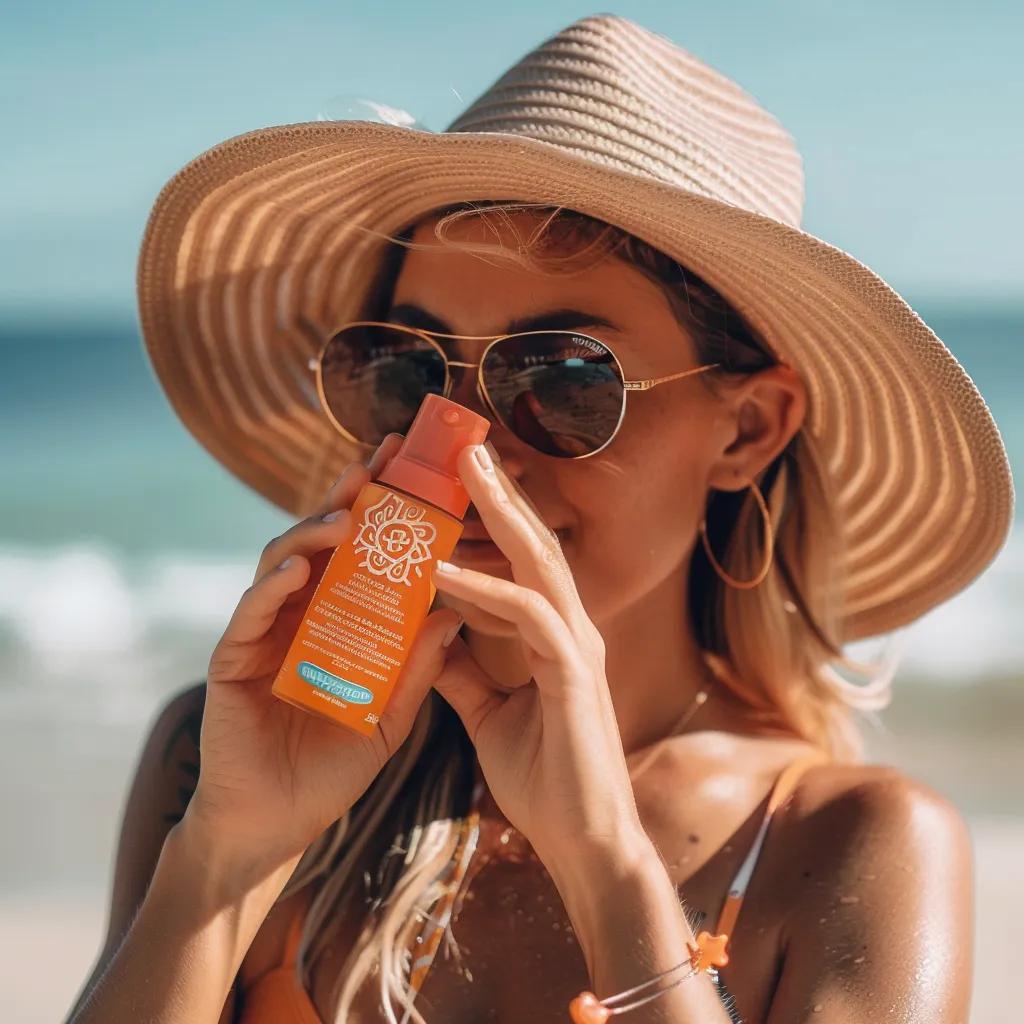Tanning Gummies vs Traditional Tanning: Health Benefits and Safety Insights
Tanning gummies have emerged as an innovative sunless tanning solution that harnesses carotenoids to promote a natural glow without UV exposure. As concerns over skin cancer and premature aging rise, understanding how these supplements compare to sunbathing or tanning beds is vital. This article examines what tanning gummies are, explores the health risks of traditional tanning, evaluates safety concerns around sunless supplements, compares effectiveness and convenience, and outlines expert strategies for a healthy, radiant complexion—all while highlighting ChUV Tanning Gummies by CayoNutra as a convenient option for health-conscious beauty.
What Are Tanning Gummies and How Do They Work?
Tanning gummies are chewable dietary supplements formulated with skin-friendly carotenoids that stimulate a natural tan and provide antioxidant protection. By delivering astaxanthin and lycopene in precise doses, these gummies enhance pigmentation from within, support cellular defense against oxidative stress and improve skin tone without UV damage.
Carotenoids and Skin Health
Carotenoids, such as astaxanthin, and lycopene, are antioxidants that can help protect the skin from oxidative stress and may contribute to a natural tan. These compounds are found in various foods and supplements and are believed to support skin health by neutralizing free radicals generated by UV exposure.
American Academy of Dermatology, Sunscreen and Sun Protection (2023)
This citation provides a scientific basis for the role of carotenoids in skin health, as discussed in the article.
What Ingredients Are in Tanning Gummies and What Are Their Benefits?

Tanning gummies blend two primary carotenoids to support a sun-kissed glow.
| Ingredient | Attribute | Benefit |
|---|---|---|
| Astaxanthin | Antioxidant | Improves UV resilience |
| Lycopene | Carotenoid | Promotes even pigmentation |
These ingredients work synergistically to boost natural tanning pathways while fortifying skin health before considering any sun exposure.
How Do Tanning Gummies Boost Pigmentation and Enhance Skin Tone?
Tanning gummies enhance skin pigmentation by supplying carotenoids that contribute to a natural tan. This internal mechanism supports a gradual, even tan while reducing reliance on direct sun or tanning beds.
Why Are Tanning Gummies Considered a Convenient and Safe Alternative?
Tanning gummies offer three core advantages as a sunless tanning method:
- They eliminate ultraviolet exposure, lowering skin cancer and photoaging risk.
- They fit easily into daily routines without topical creams or salons.
- They carry minimal side effects when taken at recommended dosages.
With these benefits, gummies represent a hassle-free, health-focused approach to a sun-kissed complexion and set the stage for comparing risks inherent in traditional tanning.
What Are the Health Risks of Traditional Tanning Methods?
Exposure to natural sunlight or tanning beds relies on UV-A and UV-B radiation, which penetrate skin layers and trigger DNA damage. Chronic UV exposure accelerates collagen breakdown and heightens the risk of skin malignancies, making safer alternatives increasingly appealing.
UV Radiation and Skin Damage
Exposure to ultraviolet (UV) radiation from sunlight and tanning beds is a primary cause of skin damage, leading to premature aging and an increased risk of skin cancer. UV-A and UV-B rays penetrate the skin, causing DNA damage and generating free radicals that accelerate the aging process.
National Cancer Institute, Skin Cancer (2024)
This research supports the article's discussion of the harmful effects of UV radiation from traditional tanning methods.
How Does UV Radiation from Sun and Tanning Beds Damage Skin?
UV-A and UV-B differ in wavelength but both harm skin:
| UV Type | Penetration | Damage Mechanism |
|---|---|---|
| UV-A | Deep dermis | Generates free radicals |
| UV-B | Epidermis | Causes sunburn and DNA mutations |
What Are the Long-Term Health Consequences of Traditional Tanning?
- Increased risk of melanoma and non-melanoma skin cancers.
- Premature wrinkles, loss of elasticity and leathery texture.
- Persistent hyperpigmentation and uneven skin tone.
Why Do Dermatologists Advise Against Traditional Tanning?
Dermatology experts uniformly recommend avoiding UV tanning due to clear links with skin cancer, immunosuppression and accelerated aging. The American Academy of Dermatology endorses sunless alternatives and stresses broad-spectrum sunscreen use to protect healthy skin.
Are Tanning Gummies Safe? Addressing Common Safety Concerns
Yes, most carotenoid-based tanning gummies are safe when formulated without canthaxanthin and taken as directed. They utilize plant-derived antioxidants that lack the liver and eye risks associated with older tanning pills.
What Is the Canthaxanthin Controversy and Its Health Risks?
Canthaxanthin, once used in tanning pills, accumulated in retinal tissue and caused vision impairment and hepatitis. Regulatory bodies no longer approve canthaxanthin for tanning, making carotenoid blends like astaxanthin and lycopene the preferred, safer choice.
How Do ChUV Tanning Gummies Prioritize Skin Health and Safety?
ChUV Tanning Gummies by CayoNutra contain standardized doses of astaxanthin and lycopene sourced from algae and fruit extracts. Their formulation supports antioxidant defense, reduces oxidative stress and delivers carotenoids in bioavailable gummy form, ensuring both safety and skin-supportive efficacy.
What Are Potential Side Effects of Tanning Gummies and How to Avoid Them?
Common side effects may include mild gastrointestinal discomfort or yellow-orange skin tint if overdosed. To minimize risks:
- Adhere to the recommended daily dosage.
- Stay hydrated to aid carotenoid absorption.
- Consult a healthcare professional if you have liver conditions.
These precautions help maintain a healthy balance and optimal tanning results.
How Do Tanning Gummies Compare to Traditional Tanning in Effectiveness?
Tanning gummies offer a gradual, controlled darkening effect over weeks, while UV methods produce immediate but potentially harmful results. Understanding the timeline and protective differences is key to selecting the right approach.
How Quickly Do Tanning Gummies Show Results Compared to Sun or Tanning Beds?
Users typically notice a subtle tan within 4 weeks of consistent gummy intake, reaching full effect by 8–12 weeks. In contrast, UV tanning yields instant color changes but at the cost of cumulative skin damage.
Can Tanning Gummies Provide UV Protection or Replace Sunscreen?
Tanning gummies improve internal antioxidant status but do not offer SPF protection. They support skin resilience against oxidative stress but should always be paired with broad-spectrum sunscreen for true UV defense.
What Are the Cost and Convenience Differences Between Both Methods?
- Gummies cost align with premium supplement pricing but avoid salon or clinic fees.
- No need for scheduling or leaving home—just chew daily.
- UV tanning may seem cheaper per session but carries hidden health expenses over time.
Supplemental tanning from gummies thus emerges as a budget-friendly, low-hassle solution.
How Can You Achieve a Healthy, Natural Glow Safely?

A holistic approach combines sunless supplements, topical protection and skin-smart habits to promote a lasting, even tan without compromising health.
What Are Expert Dermatologists’ Recommendations for Safe Tanning?
Dermatologists advise:
- Prioritizing sunless options and antioxidant supplementation.
- Applying SPF 30+ daily and reapplying every two hours outdoors.
- Using physical UV barriers like hats and clothing.
Dermatologist Recommendations for Safe Tanning
Dermatologists strongly advise against traditional tanning methods due to the associated risks of skin cancer and premature aging. They recommend sunless tanning options, the use of broad-spectrum sunscreen, and protective clothing to minimize UV exposure and maintain skin health.
World Health Organization, Ultraviolet Radiation and Skin Cancer (2022)
This citation reinforces the article's emphasis on the importance of safe tanning practices and the recommendations of dermatologists.
How Can Tanning Gummies Be Combined with Sun Protection for Best Results?
Integrate gummies with a skincare routine by:
- Taking one gummy each morning to boost carotenoid levels.
- Applying broad-spectrum SPF before sun exposure.
- Reapplying sunscreen and seeking shade during peak UV hours.
What Do Real Users Say About Their Experience with Tanning Gummies?
Many consumers report a natural, even tan without redness or peeling. Verified testimonials praise improved skin tone, better hydration and no burn spots, reinforcing tanning gummies as a trusted sunless tanning solution.
Maintaining a sun-safe glow requires informed choices that prioritize long-term skin health. By combining scientifically backed carotenoids in ChUV Tanning Gummies with dermatologist-recommended sun protection, you can achieve and sustain a radiant complexion responsibly. Explore more at cayonutra.com to discover how these innovative supplements support your journey to a healthy, natural glow.


